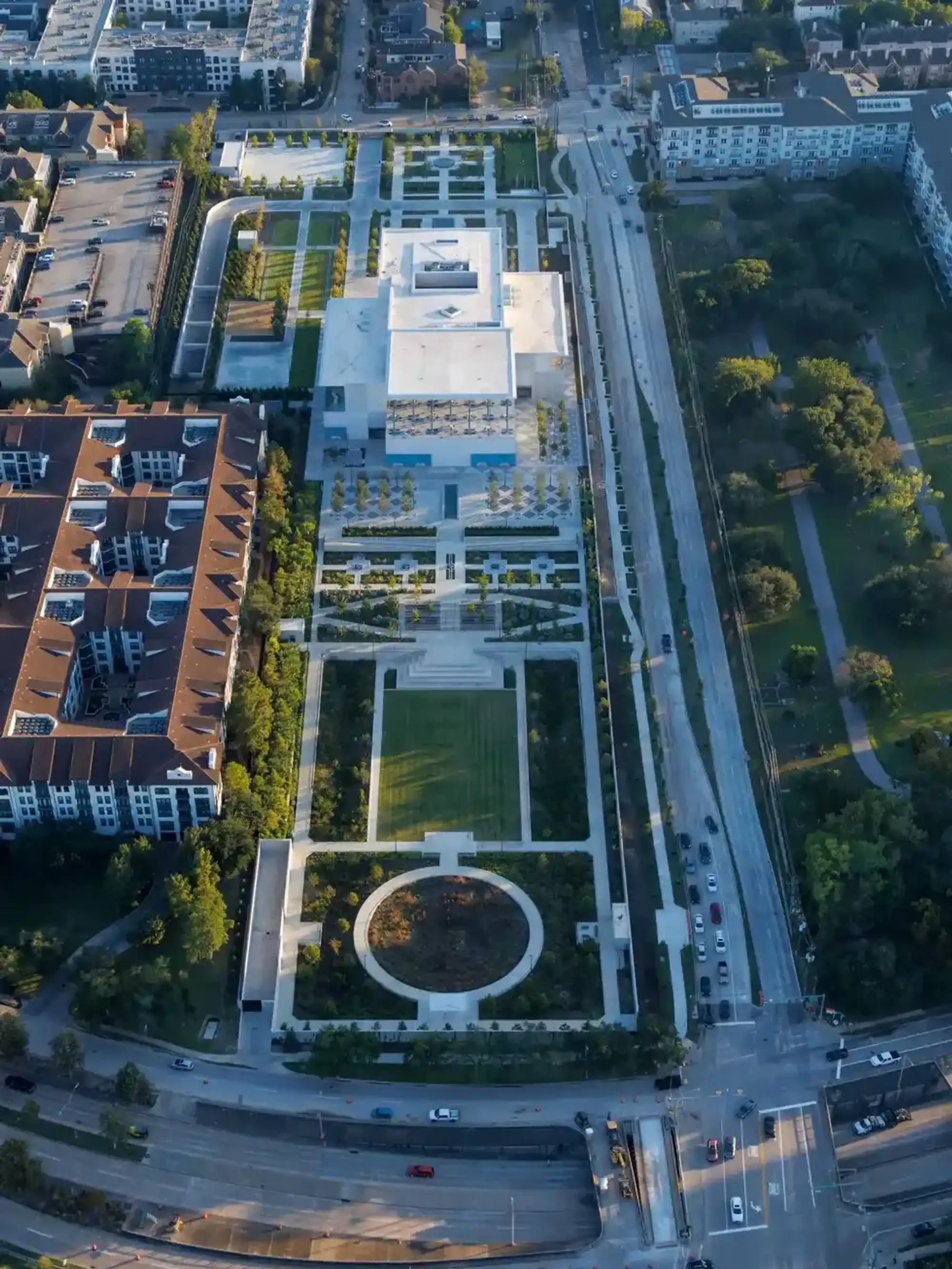City of Houston rolls toward greater connectivity with $3.3M bridge project
how we roll
In effort to make Houston more walkable and bike-friendly, city organizations have completed an important step in connectivity with the opening of a crucial new bridge.
Leaders from various city groups recently celebrated the ribbon cutting for the Brays Bayou Greenway Bridge, which will serve as an important connection between the University of Houston and the future home of the UH College of Medicine — as well as MacGregor Park.
The Brays Bayou Greenway Bridge runs along Martin Luther King Jr. Boulevard and the METRO Rail Purple Line. The pedestrian/bike bridge is an essential link in the 36.98-mile Brays Bayou Greenway.
Land acquisition, design, and construction of the Brays Bayou Greenway Bridge project cost $3.3 million. Engineering firm Halff Associates, along with SWA, designed the project. The Texas Department of Transportation led the construction effort and was provided funding through the Houston-Galveston Area Council. Altus was the general contractor. The University of Houston provided the easement for the bridge.
The new connector is part of the city's Bayou Greenways 2020, a public-private partnership between the Houston Parks Board, the City of Houston, the Houston Parks and Recreation Department, and the Harris County Flood Control District.
Bayou Greenways 2020 will transform 3,000 acres of underutilized land along nine major waterways and create a 150-mile network of connected parks and trails along Houston's major waterways, according to a release. In 2012, Houston voters overwhelmingly approved a bond proposal that set aside $100 million for Bayou Greenways 2020.
Houston Parks Board is raising an additional $120 million and is managing acquisition, design and construction of the Bayou Greenways. More than $110 million has been raised to date, including a historic $50 million donation from the Kinder Foundation.
"The Brays Bayou Greenway Bridge is significant because it is an essential connector in the Brays Bayou Greenway trail system. In addition to benefiting the University of Houston, this bridge is also a new link for the Third Ward community," said Beth White, President and CEO of Houston Parks Board, in a statement. "Individuals and families can use the trails to commute to work, walk to school, or just for fun."
Also at the ribbon-cutting event, Houston BCycle celebrated its 100th bike share station located in MacGregor Park, which opened in October 2019. To date, the organization has 109 bike share stations across Houston.
"Bayou Greenways 2020 is about more than just recreation; it's about bringing Houstonians together," said Mayor Sylvester Turner, at the event. "Communities are strengthened through partnerships like this. Not only do we have a beautiful bridge connecting neighborhoods, like the Third Ward Complete Community, but we have a great way to explore the trails through BCycle's bike share stations."
------
This article originally ran on CultureMap.











 Photo by Iwan Baan
Photo by Iwan Baan